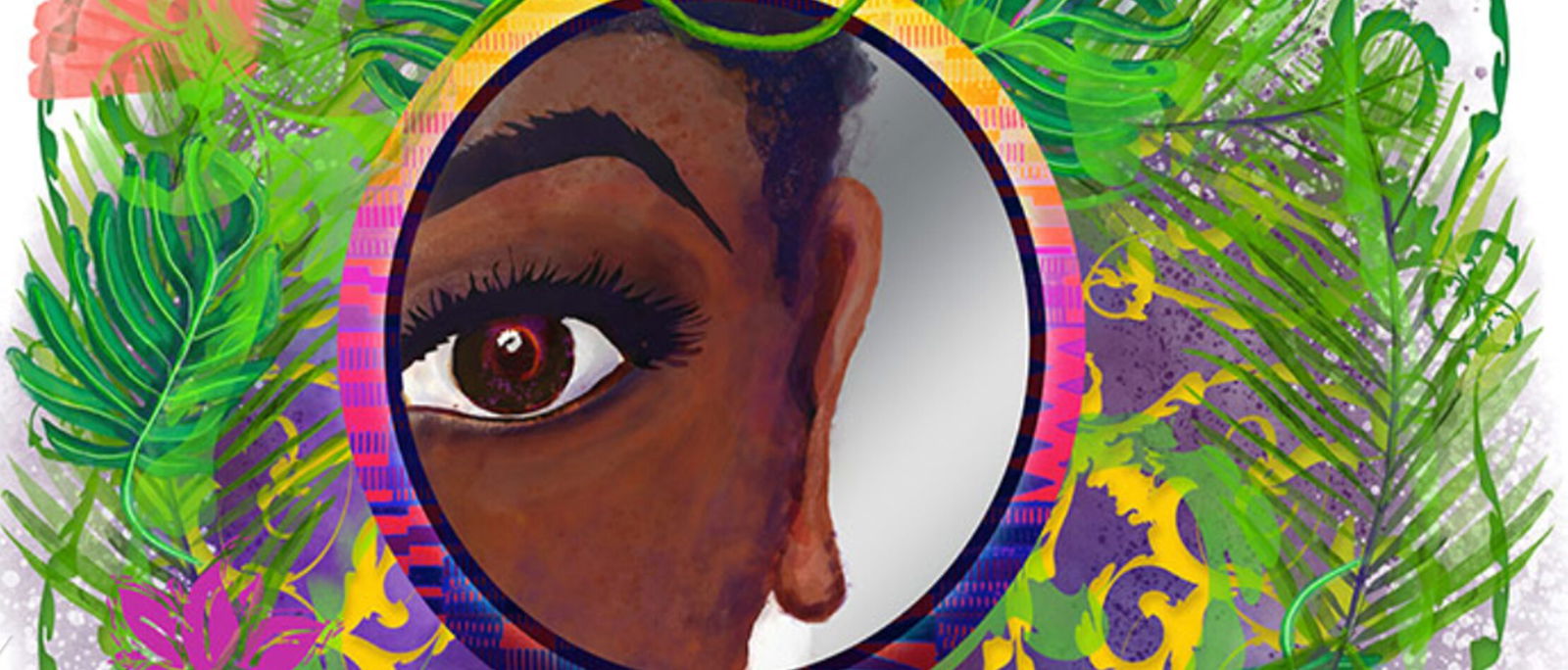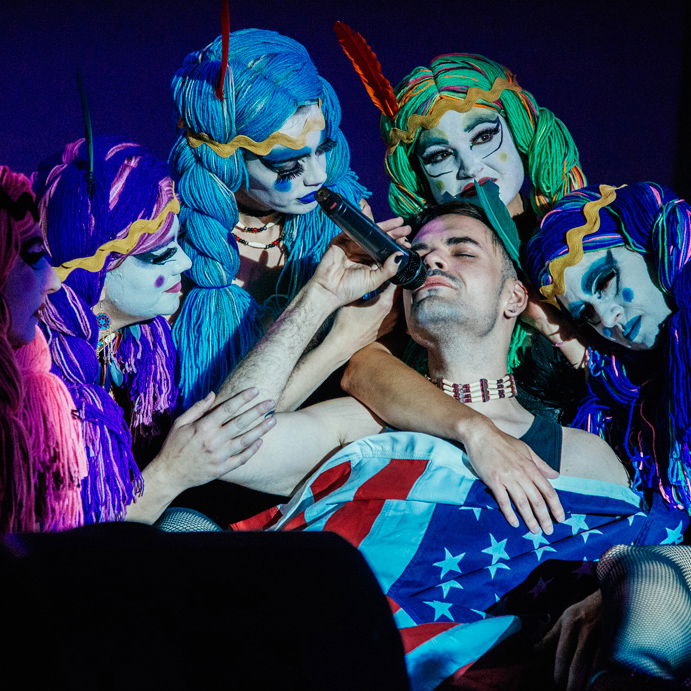“As you can see,” Lava Alapai, director of School Girls, told us in the first design meeting, “we will have a set, and there will be a roof.”
She laughs to herself and shifts back and forth in front of a TV monitor showing a rendering of the set, making us laugh too. She speaks as the director of a show ready to find its emotional core, not recite schematics.
“When I moved to Portland neither of these theaters were for me,” she says. “Nothing they [Artists Rep or PCS] did reflected me – except sometimes in February.” We laugh again, but this time it’s that School Girls brand of laughter, the kind where you immediately notice the barbs.
Now I’m at the first preview in the Armory where this co-production between Artists Rep and PCS is being mounted, and there’s indeed a set, and there is a roof. It’s beautiful. The sunlight comes in through the windows just the way you’d want it to, the brightly-lit realism setting the scene for something you might see on TV. It’s accompanied by ‘80s sitcom sound design to further evoke School Girls’ 1986-ness. Midway through the show – during The Greatest Love of All, the group number that left everyone in fits at the first table read – out comes a disco ball, the lights transporting us to a teenage prom fantasy straight from Saved by the Bell.
The audience loses it.
But – the audience. I’m getting ahead of myself.
When I first get to my seat and admire the roof Lava assured us there would be, I look to the program and see not just School Girls but Hedwig and the Angry Inch, PCS’ concurrent production, looking back at me. It’s not even February yet – granted, it’s close – and I’m in an arts venue featuring two plays in two theatres, representing the combined work of two theatre companies, with two all-Black casts. This feels overdue.
But knowing what I know about School Girls’ narrative arc, the cynic in me wonders how many white locals will celebrate this representation just for representation’s sake, for awkward declarations of “Black Girl Magic,” without grappling the play’s examinations of colorism, class, privilege, and assimilation. Flipping through the program, I wonder what cultural barriers will be encountered and where fragility may be triggered or deployed. Then I land on a page with an insert card, its printed text directed right at the reader.
It says that we all encounter theatre differently. Some audience members may react audibly, or laugh, or speak back to the stage. The card asks us not to shush our neighbors. It asks us to be generous with each other. Oh, that’s real, I think. In performing my solo version of Looking for Tiger Lily, I always notice generally whiter audiences take an…anthropological view. They’re very serious in how they view the work, quiet if not terrified, often with an expression suggesting a deer caught in headlights. My show’s a comedy, but one about tragedy, kind of like School Girls, and I assume they don’t know that it’s OK to laugh because they can’t directly empathize with my culturally specificity, let alone when it’s located so precariously near fragility-triggering issues like genocide and occupation. Native audiences, though, and queer-leaning ones lose their minds: they’re loud. They laugh. They scream. They snap and talk back. I see you. They’re two very different types of audiences, two very different cultures and worldviews. And now we’re both in the same room.
This insert is asking us to work toward a cultural equilibrium. We may be in White Portland, but there are plenty of people of color here, for a show that reflects them. Tonight at this show, your turf isn’t just your turf, in other words. A land acknowledgement at curtain even confirms that this was never your turf to begin with.
And tonight we’re all going to practice sharing it.



